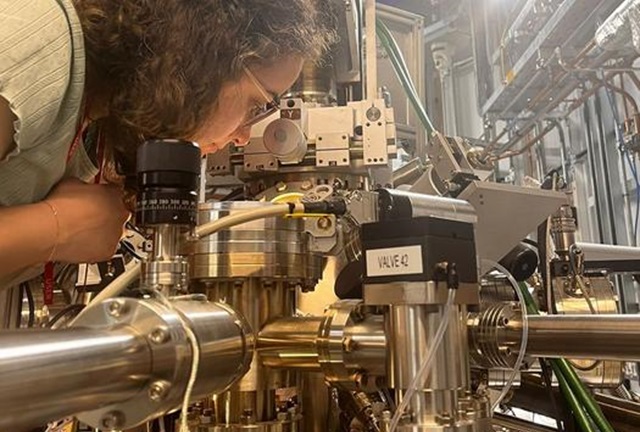Scientists are investigating two-dimensional (2D) materials—single-atom-thick sheets with potentially unique electronic properties—to develop more efficient electronics. Stacking two of these sheets at specific angles can create novel properties like superconductivity. University of Groningen materials scientist Antonija Grubišić-Čabo and her team studied such a “twisted” material and found its behavior contradicted theoretical predictions.
Together with colleagues from Poland, Germany, France, and Italy, Grubišić-Čabo and her team studied sheets of a 2-D material called tungsten disulfide. According to theoretical predictions, when two sheets, (called a bilayer), are stacked at an angle of 4.4 degrees, the electrons within the material should show a collective behavior. ‘And when they are so closely connected, their collective behavior can create new, fascinating effects,’ says Giovanna Feraco, first author of the study.
However, experimental results did not show this collective behavior, likely due to interatomic interactions within the bilayer. While the twist is typically what facilitates these interactions, the study of the bilayer’s electronic structure revealed a tendency for the material to “relax” into larger, untwisted areas, as explained by Feraco. Essentially, the twisted bilayer partially reverts to a lower-energy, untwisted state.
2D materials are crystalline solids that consist of a single layer of atoms. They have a high surface-to-volume ratio, which makes them promising for applications in electronics, photonics, and energy storage.
Graphene, the most well-known 2D material, is a single layer of carbon atoms arranged in a honeycomb lattice. It is the strongest material ever measured, and it is also very flexible and transparent. Graphene has the potential to revolutionize many industries, including electronics, aerospace, and medicine.
Other 2D materials include silicene, germanene, and phosphorene. These materials have unique properties that make them suitable for a variety of applications. For example, silicene is a good conductor of heat, while phosphorene is a semiconductor with a high electron mobility.
2D materials are still in the early stages of development, but they have the potential to revolutionize many industries. As scientists continue to explore the properties of these materials, we can expect to see even more innovative applications in the future.




